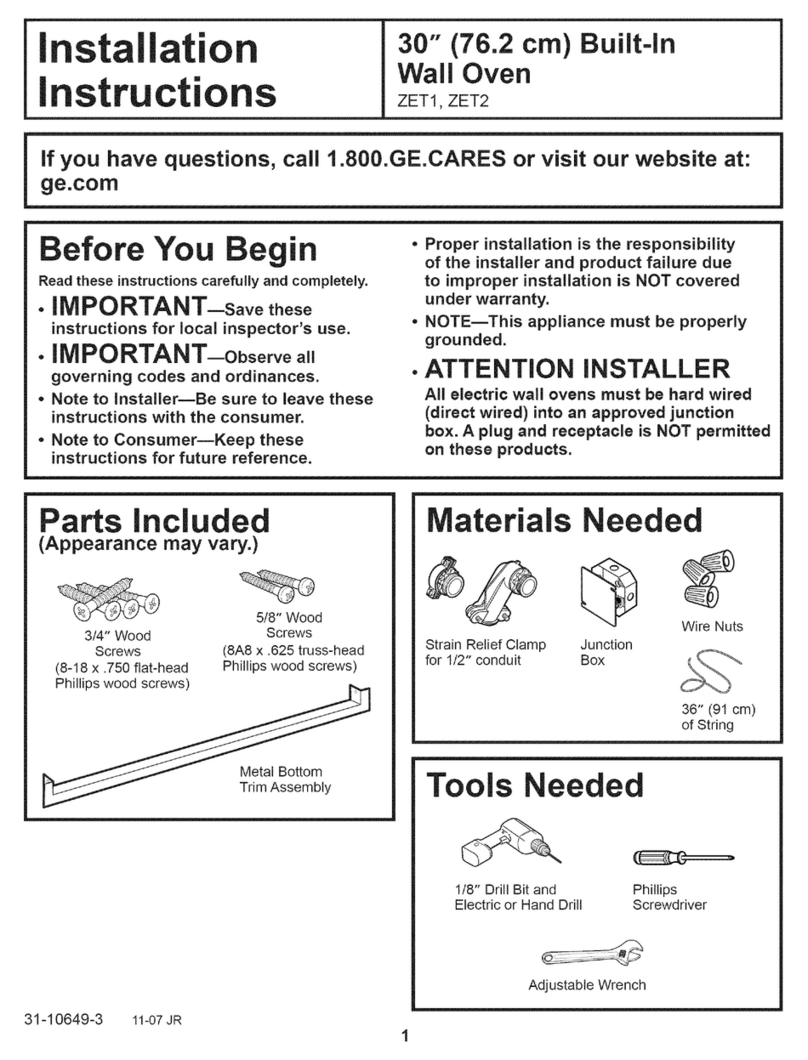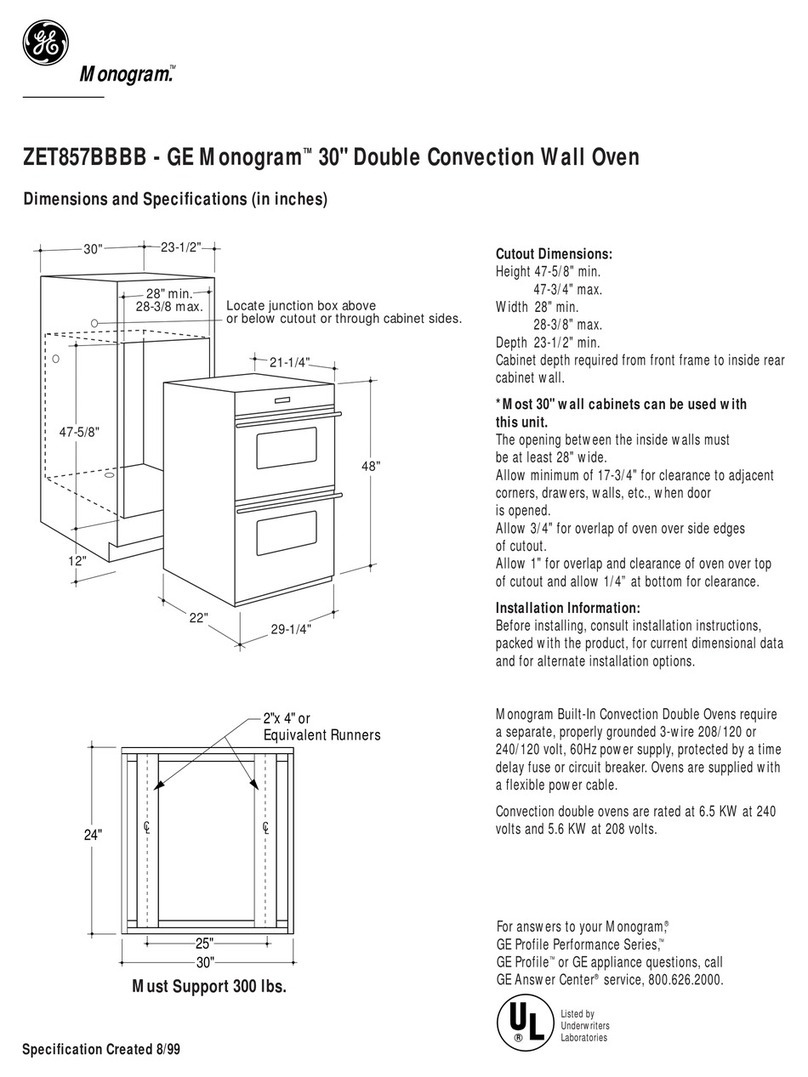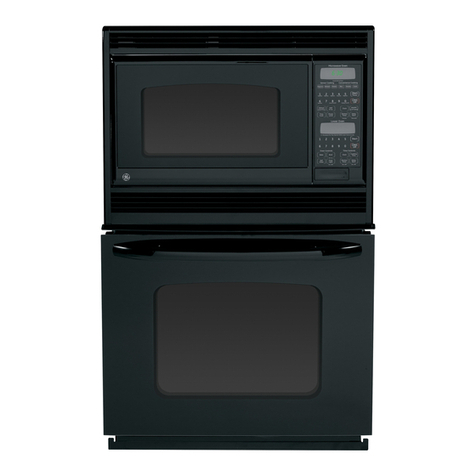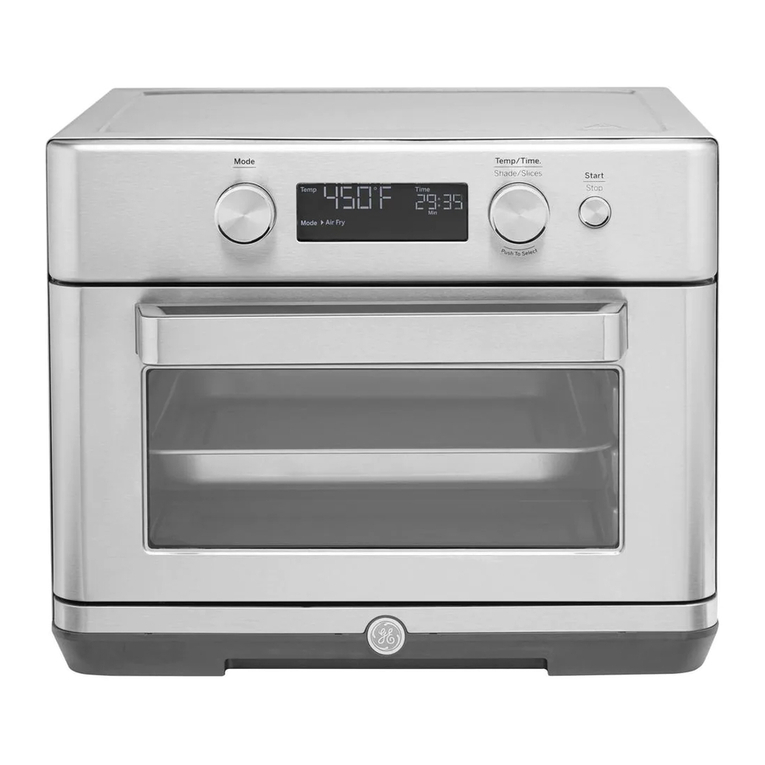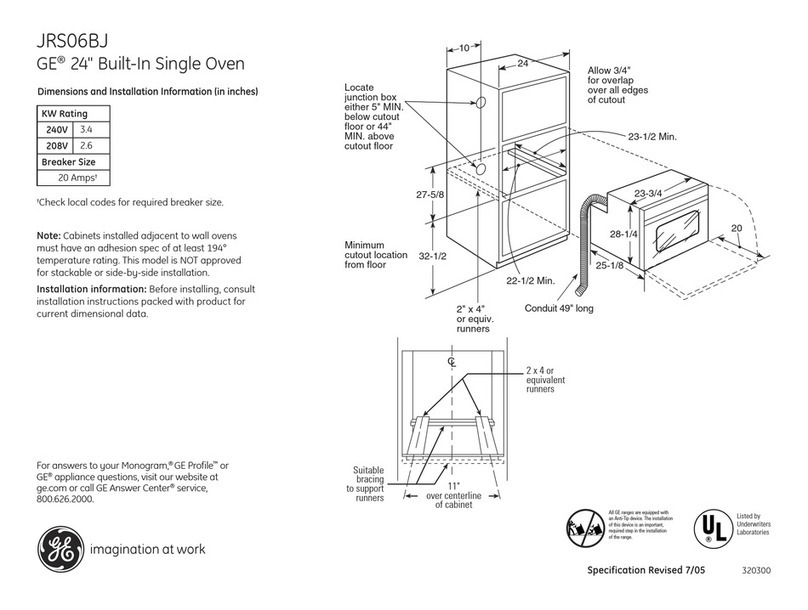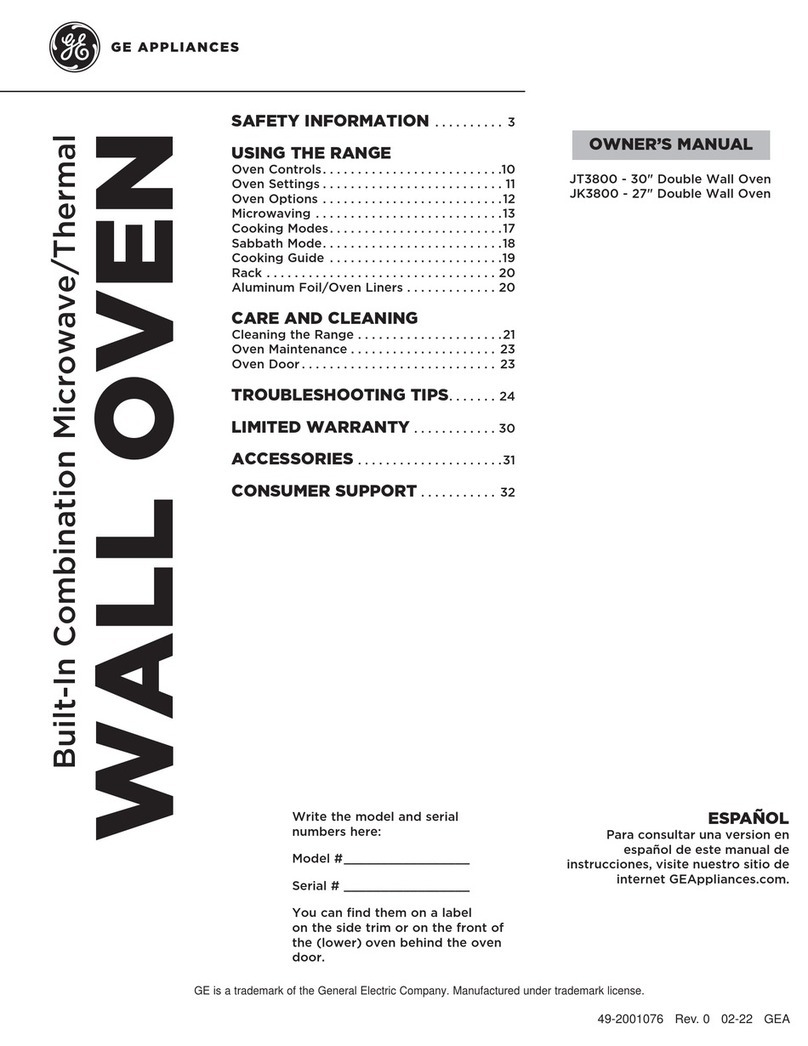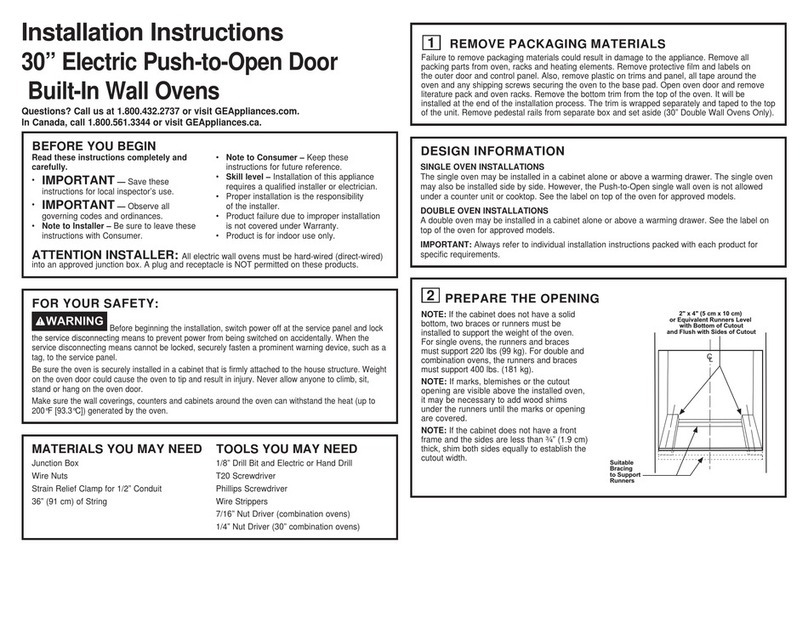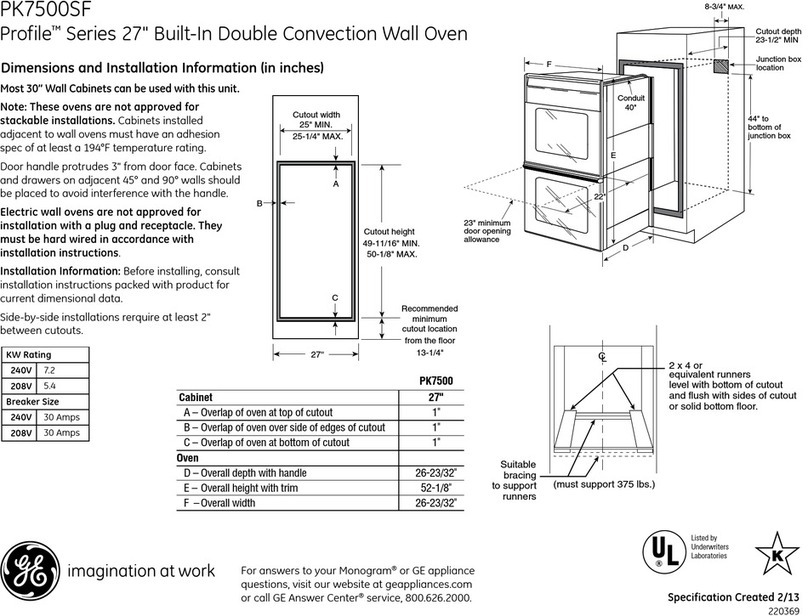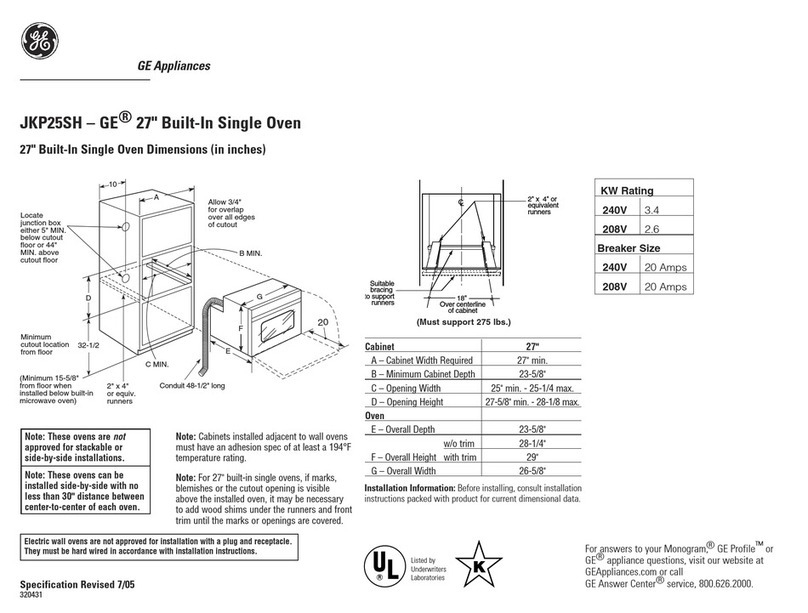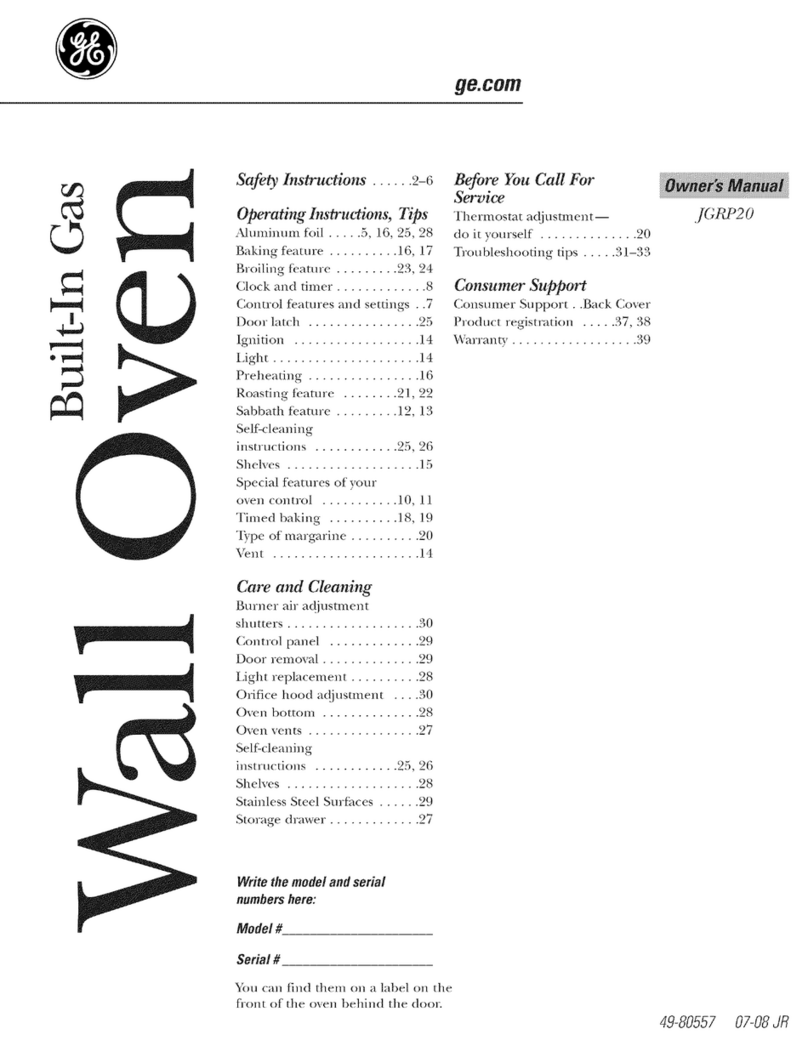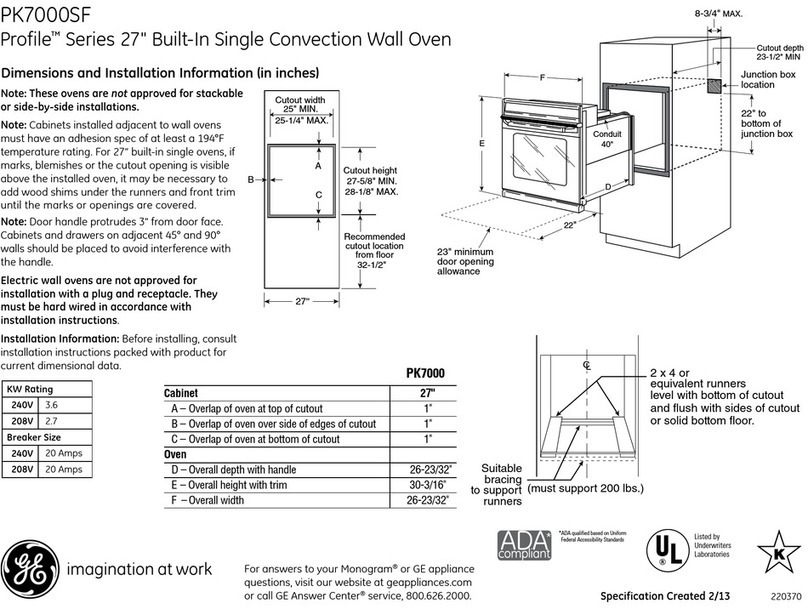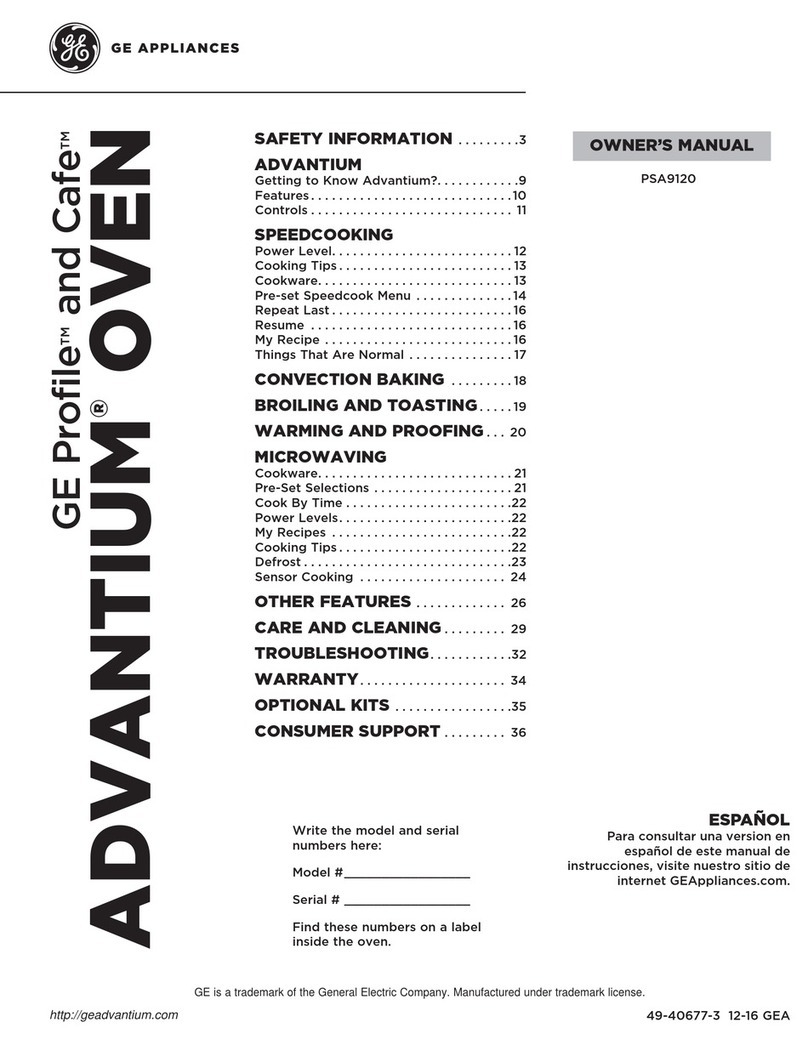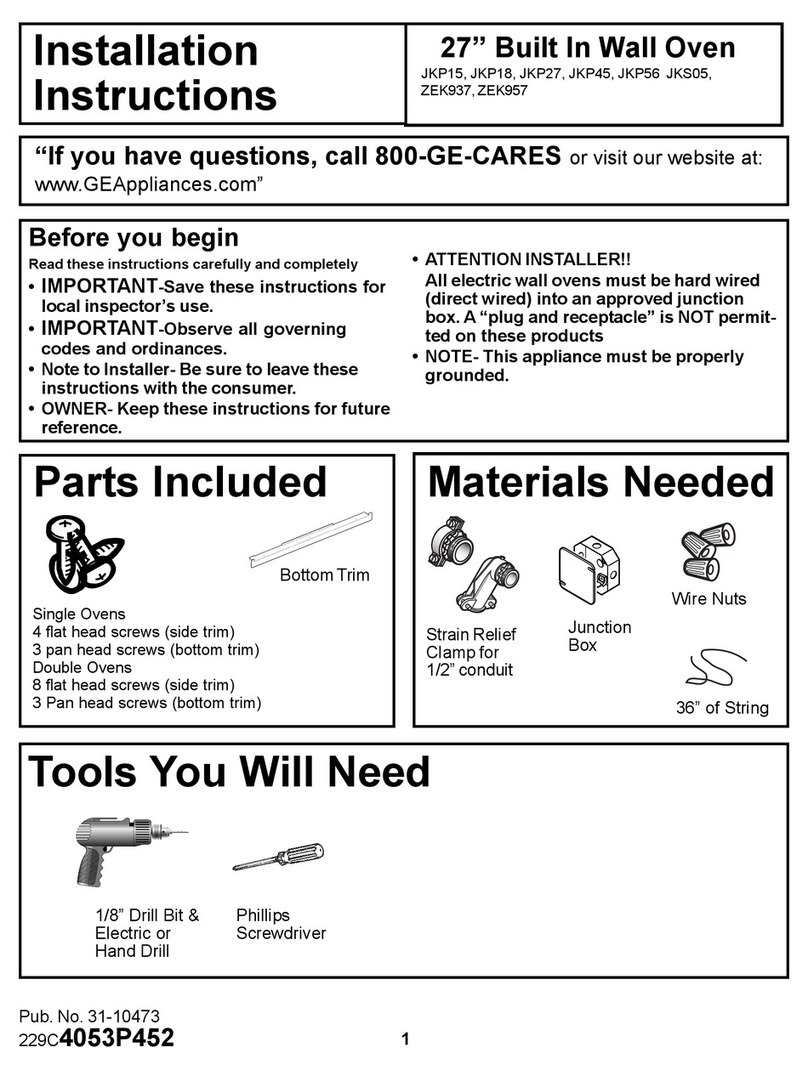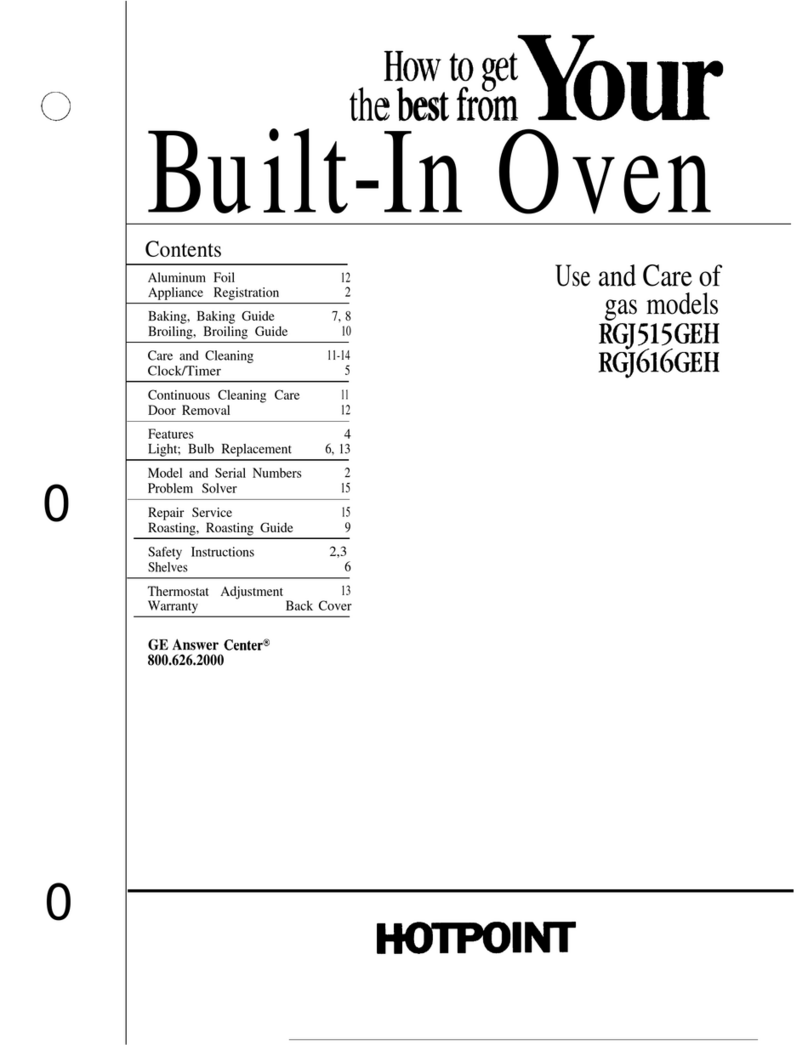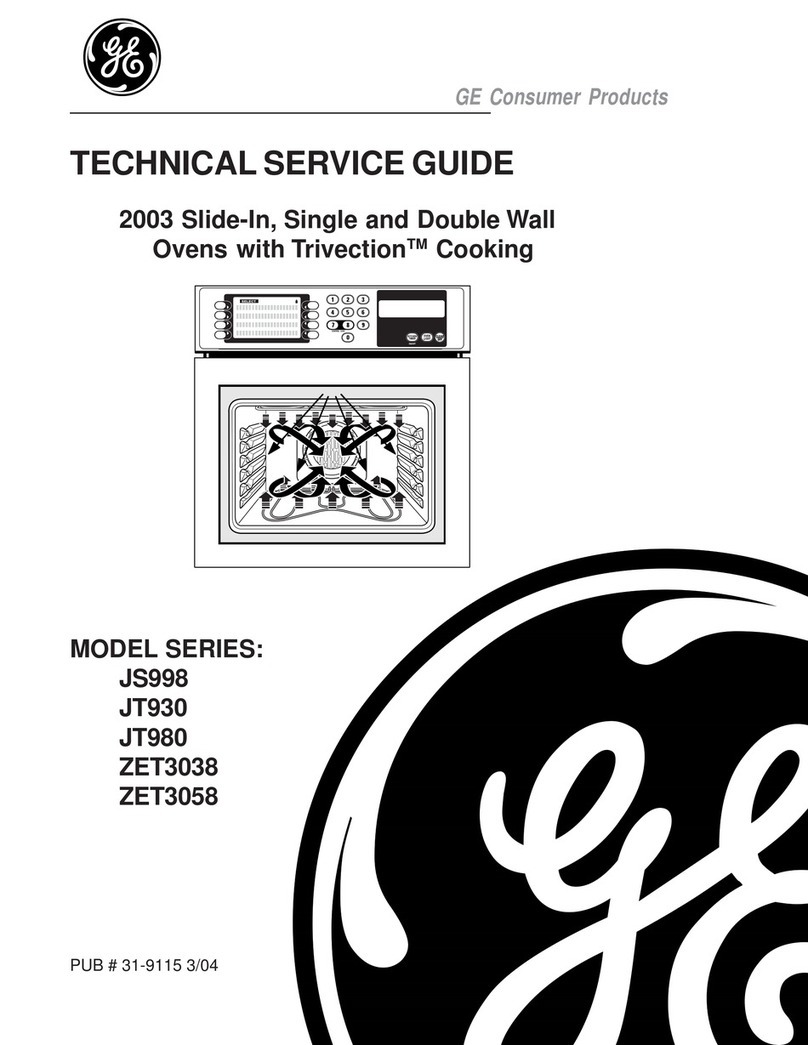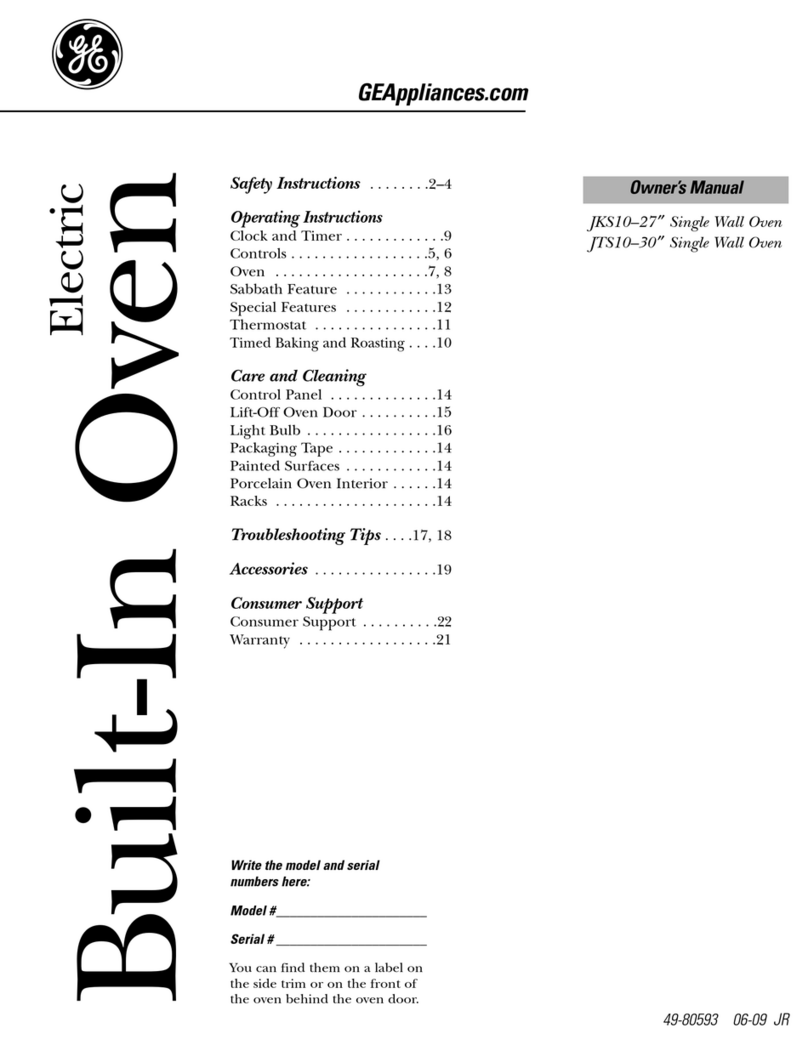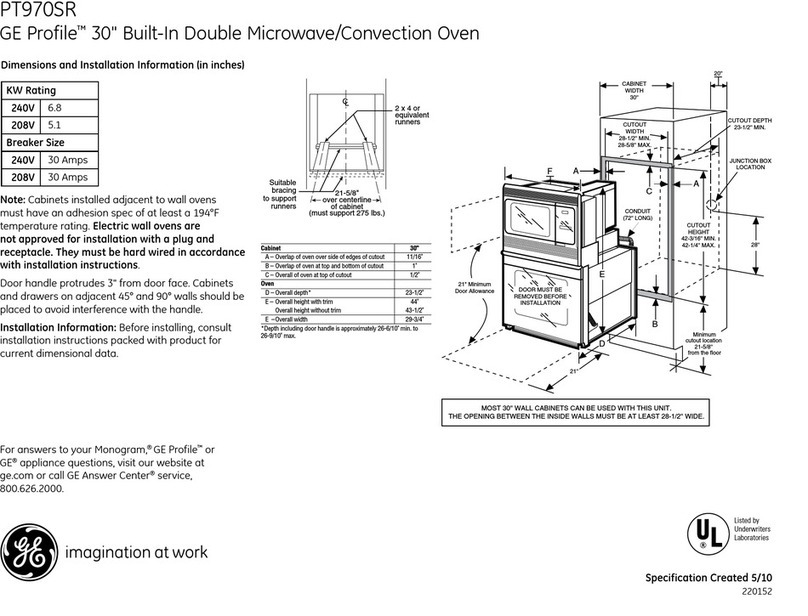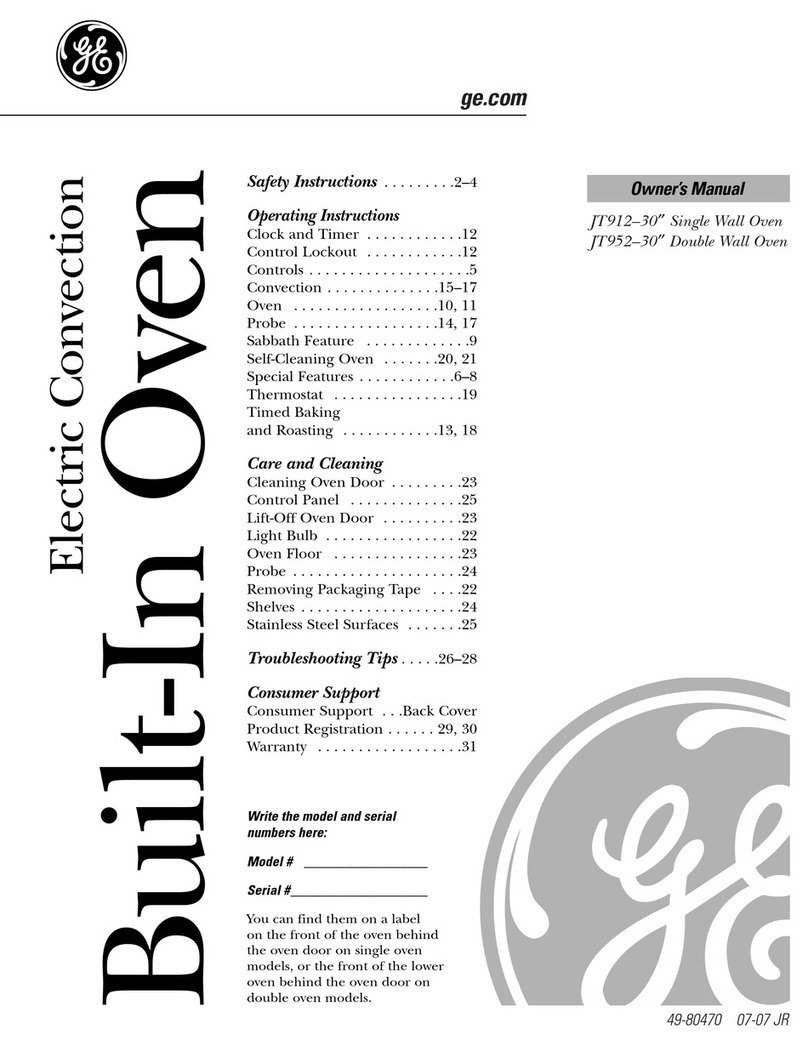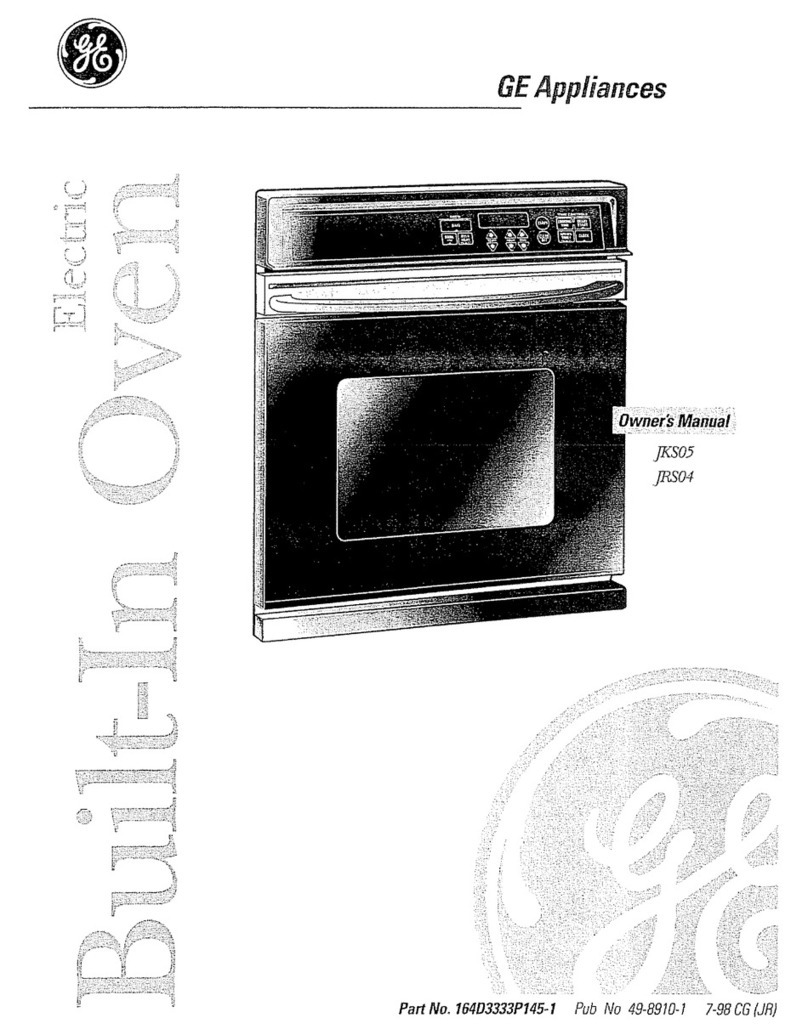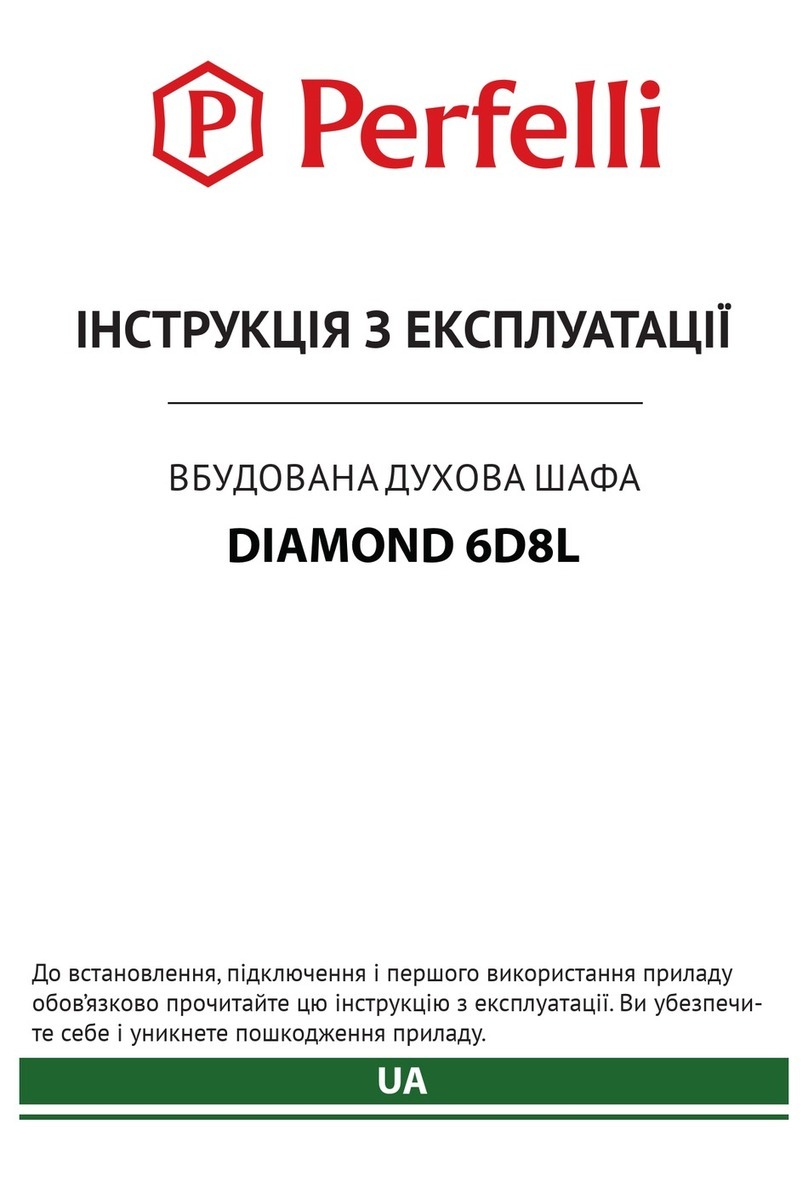
U')
(D
L._
¢D
(b
LL
u¢D
U
(1)
C:L
cO
O
i.l,J
I--
ID
R
:::)
SpecialFeatures
There are several different special features on your wall oven. To change the settings of these special features,
press the BAKE and BROIL pads at the same time and hold for three seconds. "SF" will appear in the display.
Select the feature you want to change. When the change has been made, press the START key to save the change
and return to the time of day.
Adjust the Oven Temperature
This feature allows the oven baking and convection
baking temperature to be adjusted up to 35°F hotter
or down to 35°F cooler. Use this feature if you believe
your oven temperature is too hot or too cold and wish
to change it. For double oven models, the upper and
lower ovens are adjusted separatelyo This adjustment
affects Bake, and Convection Bake (1 Rack/Multi)
modes. No other cooking modes are affected.
Press the Bake pad to select the oven to be adjusted.
Press the Bake pad again to enter the temperature
adjustment mode. A number between 35 and - 35
will display. Use the number pads to set the desired
temperature adjustment and use the Bake pad to
change between negative and positive.
Press the Start pad to save the temperature adjustment.
End of Timer Signals
This is the tone that signals the end of a timer. The tone
can be continuous (Con bEEP) or one repeating beep
(bEEP). A continuous setting will continue to sound a tone
until a button on the control is pressed. Press the Broil pad
to view the current setting and then to change the setting.
Fahrenheit or Celsius Temperature Display
The oven control is set to use Fahrenheit temperatures
(F), but you can change it to use Celsius temperatures
(C). Press the number 6 and 8 pads at the same time
to view the current setting, press again to change the
setting.
Clock Display
This feature specifies how the time of day will be
displayed or if no time of day will be displayed. You can
select a standard 12-hour clock (12 H), 24-hour military
time display (24 H), or for no clock displayed (oFF).
Press the Clock pad to view the current setting, press
again to change the setting.
Auto Recipe Conversion
When using Convection Bake 1 Rack or Convection Bake
Multi Rack cooking options, Auto Recipe Conversion will
automatically convert the regular baking temperatures
entered to convection bake cooking temperatures
when turned on. Note that this option does not convert
convection bake cooking times, it only converts
temperatures. Press the Convection Bake (1 RacldMuiti)
pad to view the conversion setting, press again to toggle
between On (Con On) and Off (Con oFF).
Sound Volume
This feature allows the oven tone volume to be adjusted
between high (HI bEEP HI), medium (Std bEEP Std),
low (Lo bEEP Lo) and off (oFF bEEP oFF). Press the
number I and 5 pads at the same time to view the
current setting or to change the setting. The control will
sound the oven tone at the new volume level each time
12-hour auto shut-off and Sabbath
Options for this feature are "12 SHdn", "no SHdn" and
"SAbbAtH".
12-hour auto shut-off turns off the oven after 12 hours of
continuous operations.
Sabbath mode disables the oven lights (the oven light
will not turn on when the door is opened), all sounds
(the control will not beep when a button is pressed),
Convection, Broil, Warm, Proof, Cook Time, Timer,
Clock, and Delay Time functions. Sabbath mode can
only be used with Bake. This feature conforms to the
Star-K Jewish Sabbath requirements.
Press and hold the Bake and Broil pads for 3 seconds
to enter special features.
Press the Delay Time pad to view the current setting
and then to change the setting.
To use Sabbath mode, select "SAbbAtH" and press 8tart.
A ] will appear in the display and the clock will not display.
Note that if you have a double wall oven, when you
place the control into Sabbath mode, both ovens are
now in Sabbath mode and available for cooking.
Once in Sabbath mode, at any time you can press Bake,
use the number pads to enter a temperature between
170F and 550F, and press Start. No sound will be given
when the keys are pressed. At a random time between
30 seconds and 1 minute, ][, will appear in the display
indicating the oven is running.
Note that both ovens of a double wall oven can be used
in Sabbath mode. Each oven can be programmed
to a different temperature and each oven must be
programmed separately.
If you need to adjust the temperature, press Bake, use
the number pads to enter a new temperature between
170F and 550F, and press Start.
To turn the oven off, press Cancel/Off at any time. The
oven will immediately turn off and ][ will change to ]
indicating that the oven has turned off.
Note that each oven of a double wall oven must be
turned off separately.
To exit Sabbath mode, make sure that the oven is
turned off. Press and hold the Bake and Broil pads for 3
seconds to enter special features then press Delay Time
until either "12 SHdn" or "no SHdn" is in the display and
press Start.
NOTE: If power outage occurs during Sabbath mode the
unit will remain in Sabbath mode but off when power is
restored.
If you wish to use the Cook Time feature (if available) to
bake in the oven and then have the oven automatically
turn off, you will need to press the Cook Time button,
enter a cooking time duration, and press Start. Then
enter special features to start Sabbath mode as detailed
above.
the sound level is changed.
0 49 80698 i







